An agar jelly containing starch was prepared and four wells were made in it. A different solution was placed in each well and two hours later, the jelly was flooded with solution X. The diagrams shows the final appearance of the jelly.
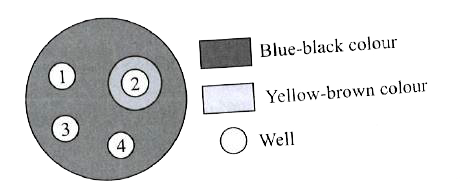
Which of the following options is correct regarding this?
Solution X can be either iodine solution or Benedict's solution which both test for carbohydrates.
Solutions added in the well 1, 3 and 4 must be starch digesting enzymes.
If the solution X was added immediately after adding the solutions in well 1, 2, 3 and 4 no yellow brown part would have been obtained.
Solution added in the well 2 has no effect on starch.
The correct Answer is:C
Solution X can be only iodine solution as it tests for starch. The solution added in well 2 must be a starch digesting solution because the part around this well gave, yellow brown colour after adding iodine. Yellow brown colour indicates absence of starch, that means starch in the part around well 2 has been digested into its constituents.
Every digesting solution needs some time to work upon the molecules, so if the iodine had been added just after adding solutions in well, then no yellow brown part would have been obtained.
Topper's Solved these Questions
Similar Questions
Zinc pieces were placed in each of the four test tubes containing different salt solutions as shown below:

In which cases will colour change be observed in solutions?
View SolutionA student was–performing an activity to prove the requirements for photosynthesis. During this activity, he kept two identical healthy potted plantsA and Bin dark for 72 hours. After 72 hours, he covered plant A and B by bell shaped jars separately. While covering the plants with separate bell jars, he kept KOH in the watch glass by the side of the plant in setup A and not in setup B. Both these setups were made air tight and were kept in light for 6 hours. Then, Iodine Test was performed with one leaf from each of the two plants A and B.
Which of the following statements shows the correct results of Iodine Test performed on the leaf from plant A and B respectively?
View Solution
Knowledge Check
The diagram shows three waves X, Y and Z displayed on the screen of the oscilloscope connected to a microphone when three different sounds are made in front of the microphone.
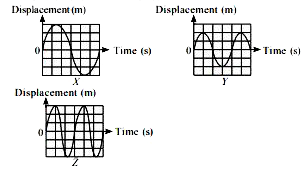
Which of the following statements is correct regarding different sounds?ASound X has a higher pitch than sound Y.BSound X has the same pitch as sound Z.CSound Y is louder than sound Z.DSound Y has a lower pitch than sound Z.An organic compound having a carbon attached to four different group is optically actve, But is it that opposite is also true? That is, do all optically active organic compounds have chiral carbons? Not necessarily. Presence or absence of chiral centre is not the sufficiet criterion for optical activity. The ultimate criterion is presence or abosence of either plane or centre of symmtry. Two compounds which are non super im[osabble mirror images of each other are called enantiomers. If a compound contains more than one chiral carbon, new words are required to describe the relationship between various stereo isomers of the compounds. Those words are diastereomers and mesomers.
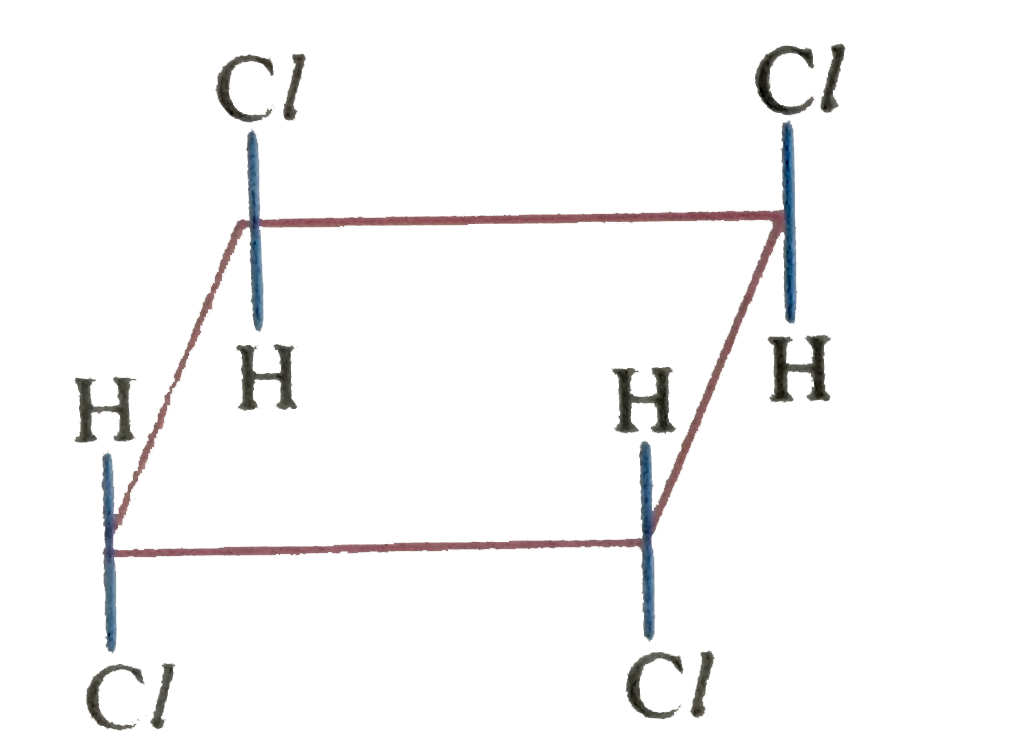
Which of the following statements is/are correct regarding the above compound.AIt is optically inactive due to plane of symmetryBIt is optically inactive due to centre of smmetryCBeing chiral it ois optically activeDIt is optically activeCase : The Figure shown below represents an activity to prove the requirements for photosynthesis. During this activity, two healthy potted plants were kept in the dark for 72 hours. After 72 hours, KOH is kept in the watch glass in setup X and 'not in setup Y. Both these setups are air tight and have been kept in light for 6 hours. Then, lodine Test is performed with one leaf from each of the two plants X and Y.
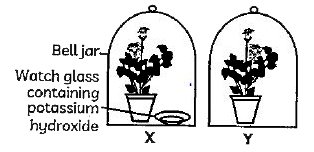
Which of the following statements shows the correct results of lodine Test performed on the leaf from plant X and Y respectively?ABlue - black colour would be obtained on the leaf of plant X and no change in colour on leaf of plant Y.BBlue - black colour would be obtained on the leaf of plant Y and no change in colour on leaf of plant X.CRed colour would be obtained on the leaf of plant X and brown colour on the leaf of plant Y.DRed colour would be obtained on the leaf of plant Y and brown colour on the leaf of plant X.
Four students A,B,C and D noted the initial colour of the solutions in beakers I, II, III and IV. After inserting zinc rods in each solution and leaving it undisturbed for two hours, noted the colour of each solution again.

They recorded their observations in thr form of a table given below:
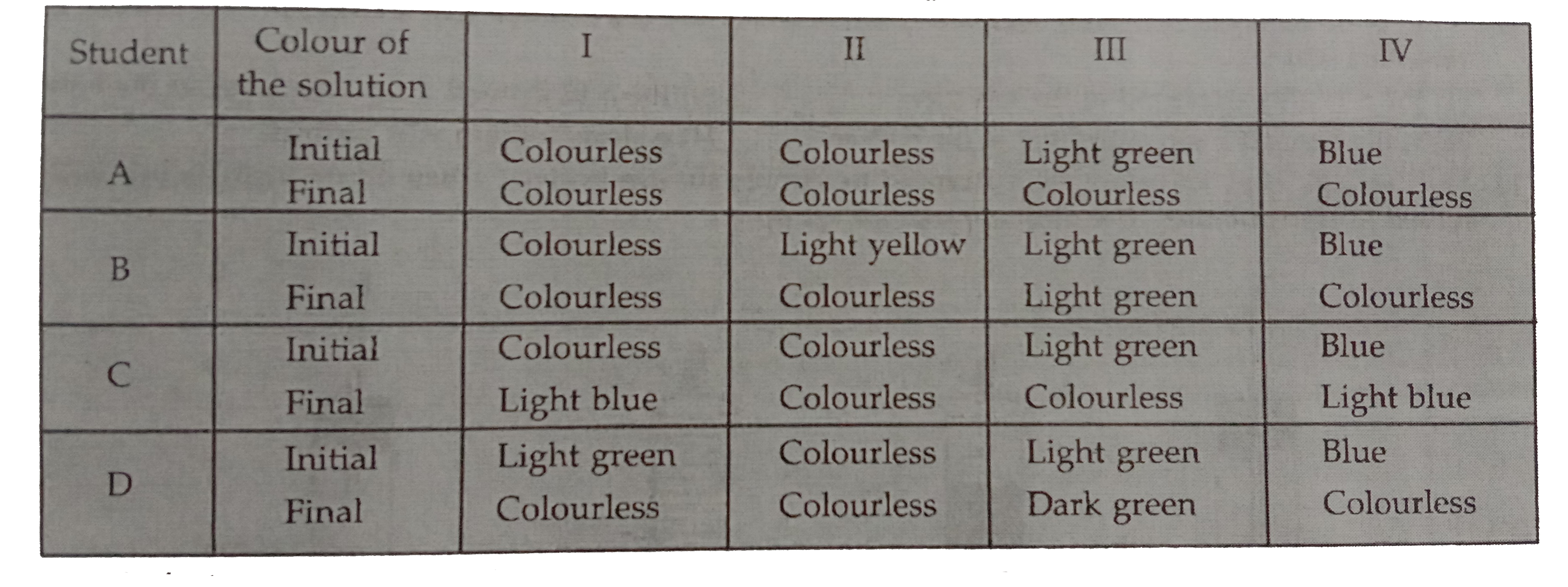
Which student noted the colour change in all four beakers correctly?
View SolutionThe Figure shown below represents an activity to prove the requirements for photosynthesis. During this activity, two healthy potted plants were kept in the dark for 72 hours. After 72 hours, KOH is kept in the watch glass in setup X and not in setup Y. Both these setups are air tight and have been kept in light for 6 hours. Then, Iodine Test is performed with one leaf from each of the two plants X and Y.
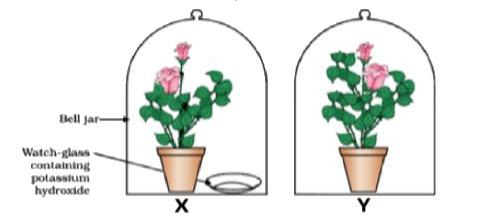
Which of the following statements shows the correct results of Iodine Test performed on the leaf from plant X and Y respectively?
View SolutionA candidate in order to study the process of osmosis has taken 3 potato cubes and put them in 3 different beakers containing 3 different solutions. After 24 hours, in the first beaker, the potato cube increased in size, in the second beaker, the potato cube decreased in size and in the third beaker there was no change in the size of the potato cube. The following diagram shows the result of the same experiment :

Write the specific feature of the cell sap of root hairs which helps in absorption of water.
View SolutionA small aquatic plant was put in each of the petri dishes X and Y containing different culture solutions. After six weeks, the plant in dish X had the same number of leaves as earlier, and all leaves were small and yellowish. The plant in dish Y had more leaves of normal size and dark green colour. Which of the following set of elements would be missing in the culture of dish X ?
View SolutionTwo beakers of capacity 500 mL were taken. One of these beakers, labelled as "A", was filled with 400 mL water whereas the beaker labelled "B" was filled with 400 mL of 2 m solution of NaCI. At the same temperature, both the beakers were placed in closed containers of same material and same capacity as shown in Fig. At a given temperature, which of the following staements is correct about the vapor pressure of pure water and that of NaCI solution ?

View Solution
